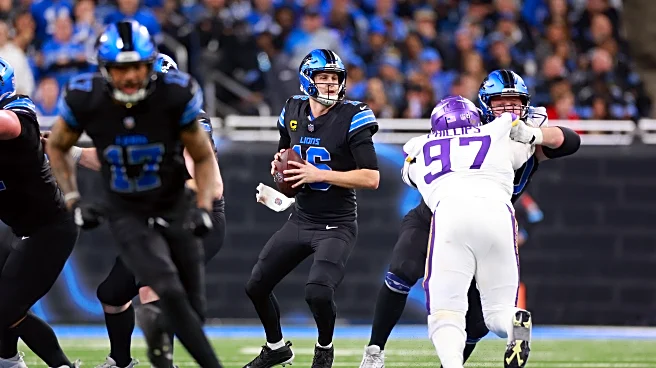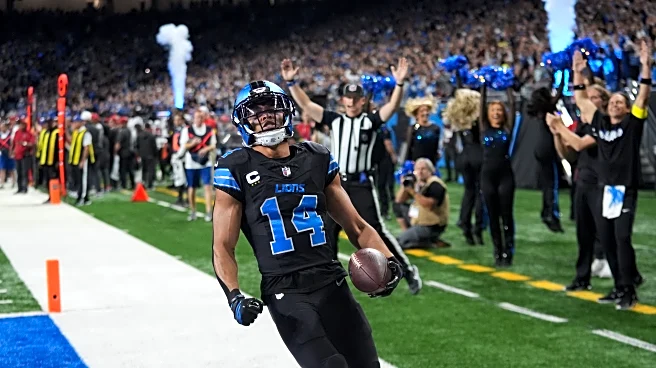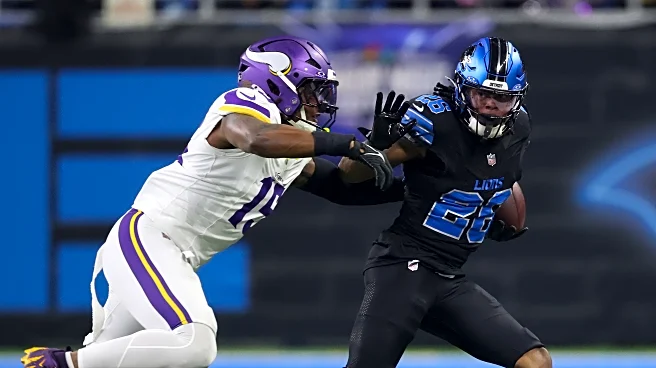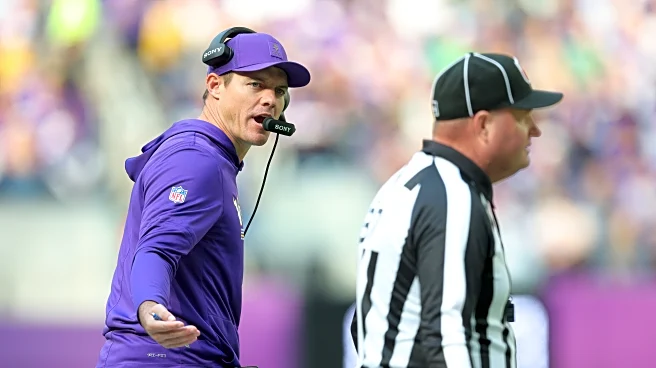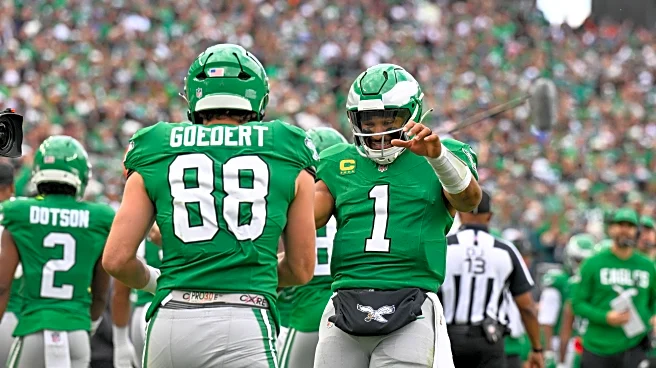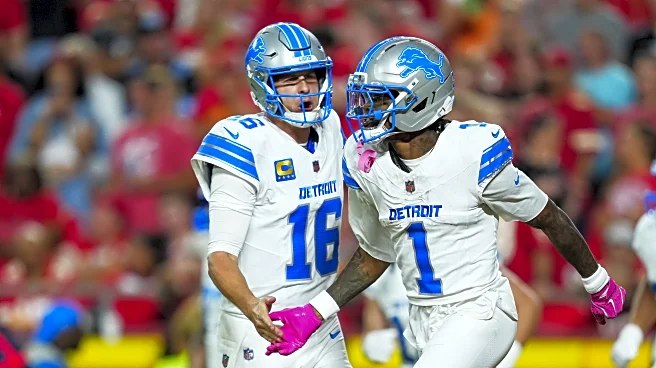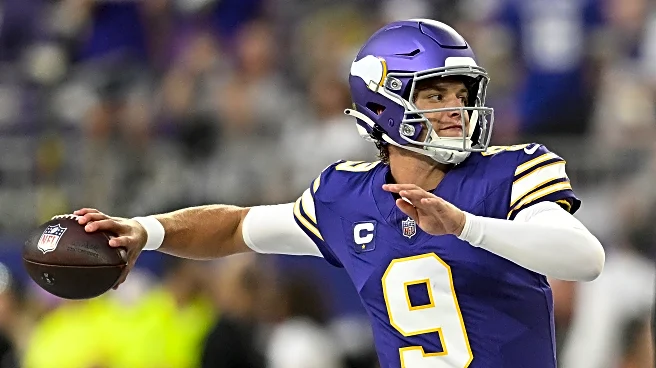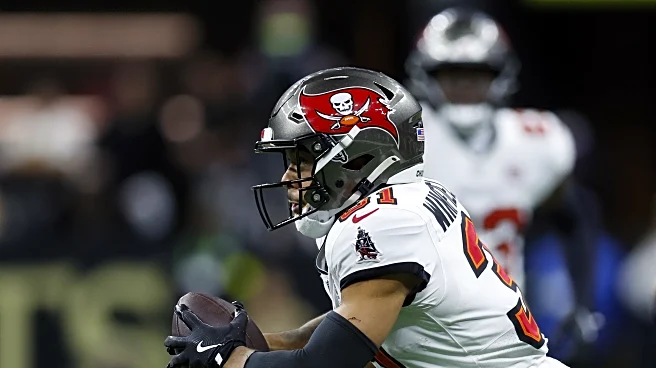The Detroit Lions (5-2) and Minnesota Vikings (3-4) will square off in a Week 9 NFC North battle at Ford Field. This will be the first of two times these teams will face off this year (they will meet again
in Week 17), and represents the Lions’ third NFC North game of the season.
“The Vikings, good divisional opponent,” Lions coach Dan Campbell said on Tuesday. “Got a lot of respect for what (Vikings Head Coach Kevin O’Connell) KOC has done out there and that staff and that team. They’ve had a lot of success, have always found a way to win and be competitive in this League, in this division, certainly. Good players.[…] This’ll be a big test for us at our place, but once again, we’re looking forward to this.”
If the Lions want to continue their winning ways, they’ll need to follow the defensive keys to victory laid out in this week’s Honolulu Blueprint.
Vikings’ base schemes
For a detailed look at the opposing scheme, make sure you check out our complementary breakdown piece: Lions Week 9 Preview: Breaking down Vikings’ offensive and defensive schemes.
Key 1: More Duo run plays
The Lions’ rushing attack statistically ranks in the top half of the NFL in almost every category, but it’s not the dominating force it’s been in recent years. Their DVOA, yards per game production, and yards over expectation have been top 10 all season, but rushing yards per attempt, EPA per rush, and success rate have all been middle of the pack.
At the heart of these issues has been a regression in production on zone-blocked runs, the blocking scheme the Lions use on roughly 60% of their snaps. During the 2023 and 2024 seasons, Jahmyr Gibbs averaged 5.88 and 6.22 yards per carry (YPC) on zone-blocked plays, respectively. In 2025, that average has dropped to 3.51 YPC. The same is true with David Montgomery, who averaged 4.83 YPC in 2023 and 4.47 YPC in 2024, but is down to 3.06 YPC in 2025.
The bright spot in the Lions’ rushing attack has been their dramatic improvement behind their Duo-blocking scheme. In 2023, the Lions ran Duo on 18% of their plays; in 2024, 15%; and this season, they’ve increased it to 28.5%. The increase is surely due to their production. Gibbs averaged 4.41 YPC on Duo runs in 2023, 5.0 YPC in 2024, while Montgomery saw efforts of 3.87 YPC and 4.38 YPC. But in 2025, production has spiked, with Gibbs averaging 7.58 YPC and Montgomery 7.89 YPC behind Duo.
The Lions’ worst statistical rushing category is creating explosive runs, ranking 25th in the NFL with only 18 rushes of 10+ yards this season. However, their two biggest run plays of the season—Gibbs’ 78-yard touchdown vs. the Bucs in Week 7, and Montgomery’s 72-yard run against the Ravens in Week 3—both were results of a Duo blocking scheme.
This week, the Lions will face a very fast Vikings defense that has been very successful defending outside-zone rushes but is unexpectedly vulnerable in the middle of its defensive line. Their penetrating front helps them make contact with a runner after just 1.14 yards on average (ninth in the NFL), but if a back can get past that first wave, there’s a lot of space behind them to run. As a result, they’ve also allowed 27 runs of 10+ yards (22nd in the NFL).
Operating a Duo blocking scheme against the Vikings plays into their weaknesses (IDL production and gaps at the second level) and the Lions’ strengths, while also creating an opportunity for explosive plays on the ground.
“They have run the ball pretty well, I think that’s been the biggest thing,” Lions offensive coordinator John Morton said of the Lions’ recent success against the Vikings. “Trying to create some big plays that way. That’s the biggest thing that I took from (rewatching games). And when you do that, when you try to create some big plays and run the ball, I mean it helps out everything.”
Key 2: Beat the blitz; Win one-on-ones
I took a deeper look at Flores’ defense in more detail in my Vikings scheme breakdown earlier this week, but one of the main things to know is that he is extremely creative and loves to blitz to create one-on-one mismatches.
“They cause havoc up front,” Morton explained about Flores. “A lot of moving parts up front, coverages, different types of coverages. Does a really good job in man-zone tells. But really, it starts up front. Trying to break down your protections to get guys through, even in the run game and everything like that. It’s kind of calmed down a little bit this year, I think, based on some of their injuries that they’ve had. But listen, everybody plays us differently, so we have to expect the unexpected with him. That’s the biggest thing.”
Morton is right that defenses play the Lions’ offense differently than other teams. For example, the Vikings blitz 41.6% of the time, second most in the NFL. But when they played the Lions last season, they dialed up the blitz to 54.7%.
Flores does this in order to add a higher level of pressure on the Lions’ talented offense, and because Jared Goff’s accuracy dips when pressure gets home. This season, when pressured, Goff’s EPA per play is -0.35 (28th in the NFL). However, blitzing Goff is a double-edged sword because if you don’t get home, he’ll carve you up. Against the blitz in 2025, Goff’s EPA per play is 0.44 (fifth best in the NFL).
This puts a lot of pressure on the Lions’ young guards, as Flores’ blitzes can be exotic and often create one-on-one matchups. Both Christian Mahogany and Tate Ratledge have been up and down with their pass protection, but it’s promising that both are coming off good showings in Week 7 vs. the Bucs. Vikings defensive lineman Jalen Redmond is the player to watch on the inside, and because he switches where he lines up pretty evenly, both Lions guards will need to be ready.
“I think Redmond’s an outstanding player,” Lions coach Dan Campbell said on Tuesday. “I really do, man. I think that guy is disruptive, I think he plays the run, I think he gets an edge in the pass game.”
Beyond Redmond, edge rushers Jonathan Greenard and Andrew Van Ginkel are both outstanding at getting pressure. Van Ginkel has been out with a neck injury for most of the season, and while there’s a chance he returns this week, as he’s been practicing in full, it’s still “not a certainty.” As for Greenard, he’s been the Vikings’ best defender this season.
Here’s an excerpt from Next Gen Stats on Greenard’s 2025 season:
Jonathan Greenard has recorded an average time to pressure of 2.44 seconds this season, the quickest mark among defensive linemen with at least 15 total pressures. Greenard has generated more pressures in under 2.5 seconds (15) than all, but one other Vikings pass rusher has generated total prssures (Jalen Redmond, 16). Opposing offenses have attempted to slow Greenard, as he has been chip blocked 23 times, while all other Vikings pass rushers have been chipped 33 combined times.
While Greenard will also switch sides, he tends to spend more time on the defense’s right side, which will put pressure on Lions left tackle Taylor Decker and possibly some “chip” help from the Lions’ tight ends and running backs.
“We have to be prepared for everything with Flores,” Morton exclaimed on Thursday. “It’s all about protection up front.”
Key 3: Attack the middle of the field
The Vikings spend about 75% of the time in zone coverage, and while they mix up the deep coverages, they run the highest percentage of Cover-2 in the NFL. When in Cover-2, they run a lot of split-zone safety coverage, and have dialed up their blitz percentage out of this set following their Week 6 bye, increasing from 20% in Weeks 1-5 to 60% in Weeks 7 and 8. The results have been boom-or-bust.
Per Next Gen Stats, the Vikings have produced five sacks when blitzing while in split-zone, but they’ve also allowed 10 completions on 14 passing attempts, for an average of 14.8 yards per reception. Next Gen also provided this nugget for this matchup:
“Jared Goff completed 17 of 22 passes for 268 yards, a touchdown, and an interception when facing the blitzes out of split-safety coverage across four prior meetings with the Flores-led Vikings.”
One reason the Vikings have been beaten in this concept is that they are struggling to get consistent coverage production from their linebackers. Of their top three linebackers, all three have below-average pass coverage grades from PFF: Blake Cashman (54.2 coverage grade per PFF), Eric Wilson (45.3), and Ivan Pace (39.4).
Essentially, the Vikings are sending pressure, dropping their safeties into two-high shells, and teams are taking advantage of the linebackers’ poor coverage by attacking the middle of the defense. In fact, the gaps have been so big at times that, for those who watched the Vikings-Chargers live stream with Jeremy Reisman and I, you will recall that I was constantly calling out open gaps in the middle of the Vikings defense.
Key 4: Give McCarthy the Baker/Lamar treatment
After leading Michigan to a National Championship, J.J. McCarthy jumped for the NFL and was the 10th overall pick in the 2024 NFL Draft. Unfortunately, after a meniscus (knee) injury cost him his rookie season, McCarthy entered his sophomore season with high expectations, but only played in Weeks 1 and 2 before an ankle injury put him on the shelf again in 2025. Now, six weeks later, McCarthy looks healthy enough to reclaim his starting role in Week 9.
With such a small sample size of NFL snaps to evaluate, it’s challenging to get a full read on what he’s capable of, which is why we’ve seen Lions coaches point to his Week 1 comeback victory over the Bears as what makes him dangerous.
Here’s an excerpt from Lions defensive coordinator Kelvin Sheppard discussing McCarthy on Thursday:
“An ultra-competitor. A player like that doesn’t get drafted where he’s drafted without a reason, and I see the reason. You turn on that Week 1 game, and they were getting stymied in the first half. And they came out in the second half, and then the way he put that team on his back, he put that offense on his back, and you saw how the guys galvanized around him. So that told me something about him. […] So, there’s a belief in that player over there, regardless of the time on task.”
Here’s a breakdown of what we know from a two-game statistical standpoint.
Against Man
- Snaps: 23
- EPA per play: -0.77
- Yards: 153
- Completion percentage: 61.11%
- Touchdowns: 2
- Interceptions: 3
- Sacks taken: 4
- Sack allowed rate: 17.39%
Against Zone
- Snaps: 29
- EPA per play: -0.33
- Yards: 131
- Completion percentage: 54.55%
- Touchdowns: 0
- Interceptions: 0
- Sacks taken: 5
- Sack allowed rate: 13.79%
Here’s an excerpt from Next Gen on this matchup:
“The Lions defense has deployed man coverage on 42.4% of their opponents dropbacks, the 4th-highest rate in the NFL. They have pressured opposing passers at the 3rd-highest rate when playing man coverage (44.9%), due in part to those passers holding onto the ball for 2.84 seconds on average, 3rd-longest in the NFL.”
Additionally, while McCarthy is coming off an ankle injury, the Lions believe he’ll still be mobile and will have the option to run as part of his game options. Sheppard called McCarthy a “physical quarterback” who can be a “tremendous running threat,” and noted that they’re preparing for that aspect of his game.
So, while the sample size is small, McCarthy appears to struggle more vs. Man coverage, and has the mobility to extend plays with his legs. Those traits likely call for the Lions to deploy a similar defense to the one we saw in Week 7 vs. Baker Mayfield and in Week 3 vs. Lamar Jackson.
Key 5: Bracket 18
“[WR Justin] Jefferson, starts with him. He’s outstanding.” — Dan Campbell
On the season, Jefferson accounts for 39% of the Vikings’ passing offense and has led the Vikings in receptions and passing yards in six out of seven games. On the season, he is averaging just under six receptions per game and 86 receiving yards, with only one touchdown. In his two games with McCarthy, Jefferson averaged 3.5 receptions for 62.5 receiving yards and scored his only touchdown.
Jefferson has played 10 games against Detroit and averaged 7.2 receptions, 120.8 receiving yards, and 0.4 touchdowns per game. However, the last time these two teams met, Jefferson was matched up against Amik Robertson—the pair have battled each other since high school—and caught only three passes for 54 yards, his second-lowest output over those 10 games.
Here’s a picture of that battle from Week 18 of 2024, via Next Gen:

Expect that rivalry to continue on Sunday.
While Robertson was tremendous the last time these teams met, the Lions would be wise to give him help against Jefferson, who is one of the most explosive wide receivers in the NFL. Here’s another excerpt from Next Gen:
“Leading their group is Justin Jefferson, who has gained the 5th-most downfield receiving yards (391) of any receiver in the NFL. While their wide receivers have put up a high-ranking yardage total, they have caught just 2 touchdowns and have totaled 5 interceptions when targeted downfield.”
In the past, the Lions have situationally used over-the-top bracket coverage to guard Jefferson, keeping a cornerback underneath his route and a deep safety over the top. The Lions should consider situational deployment of this coverage again this week and force McCarthy to find other, less productive options.
